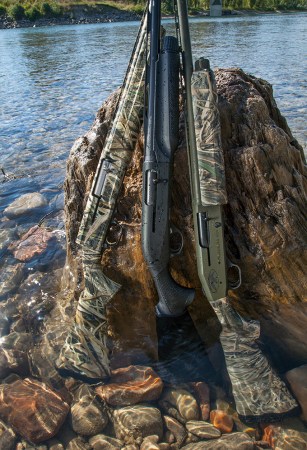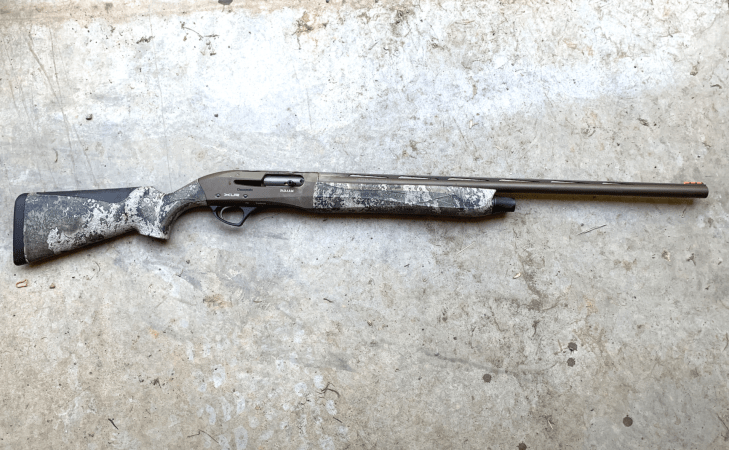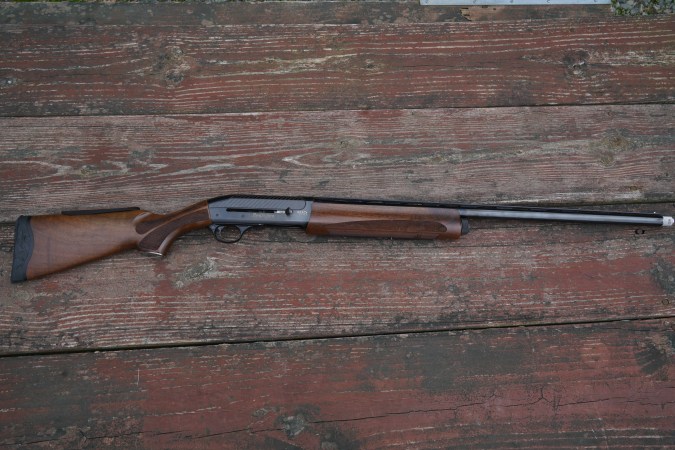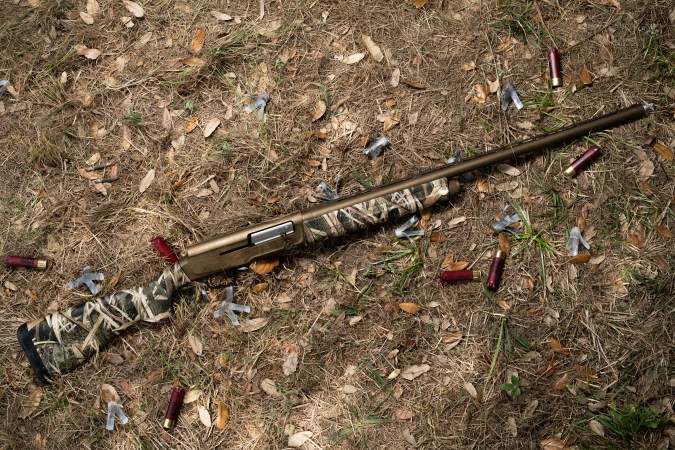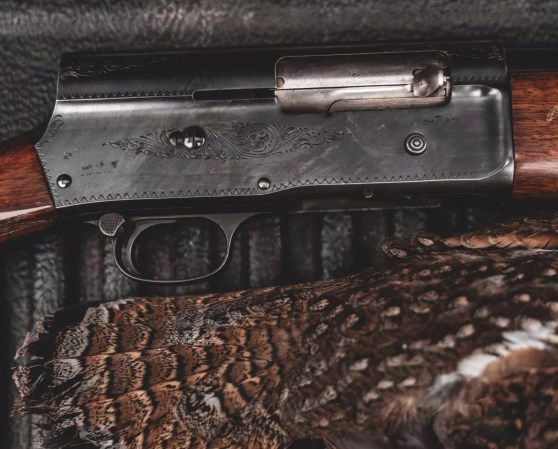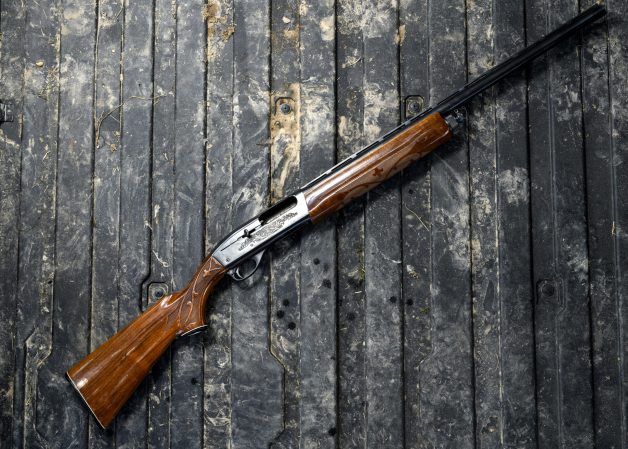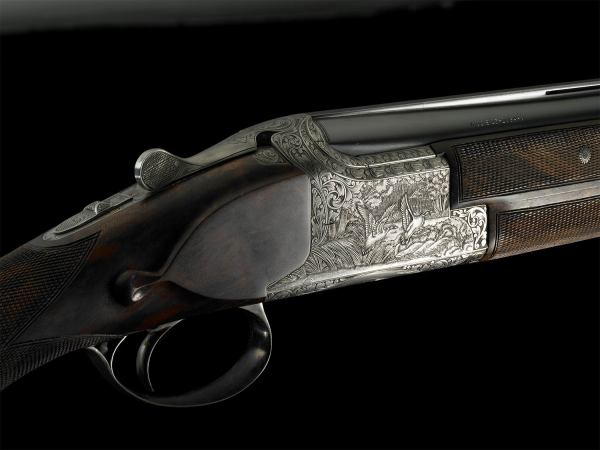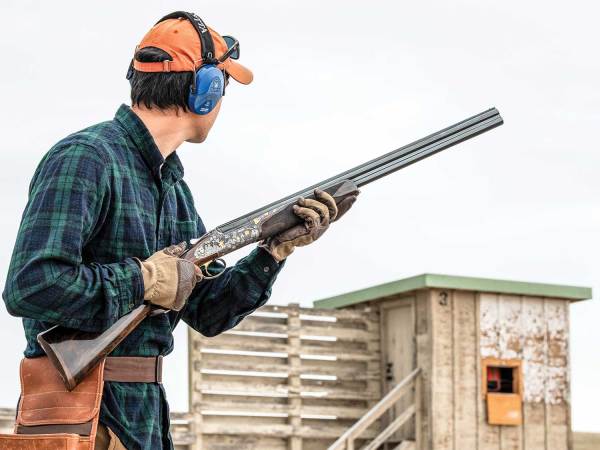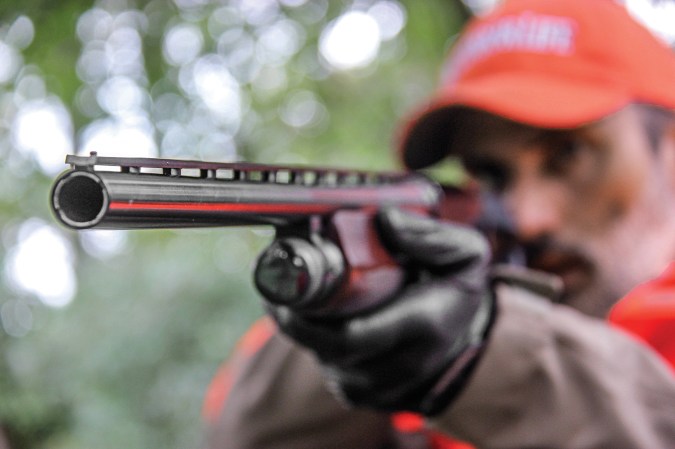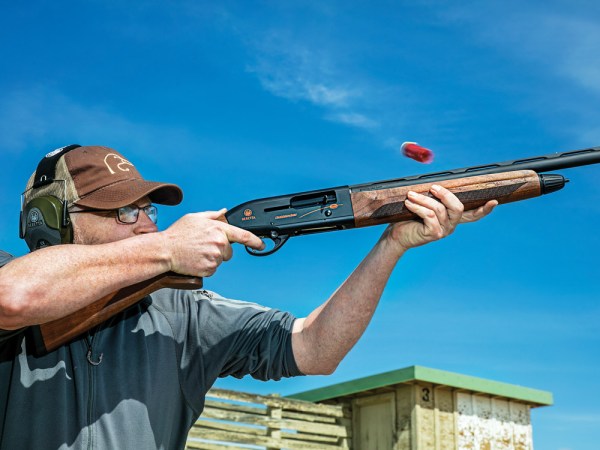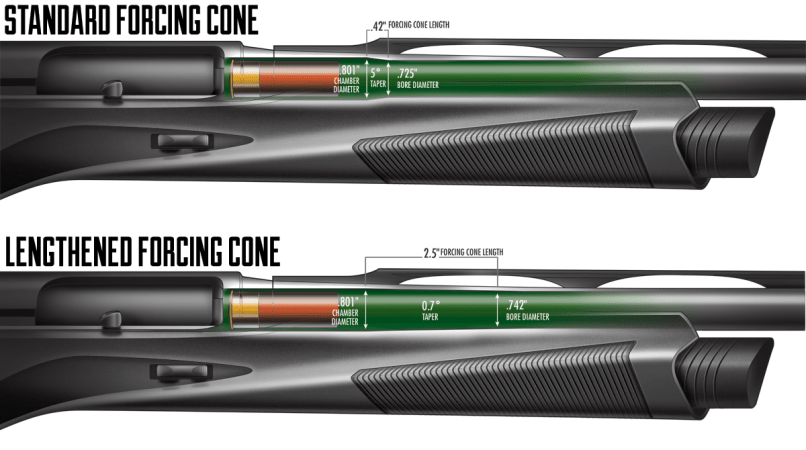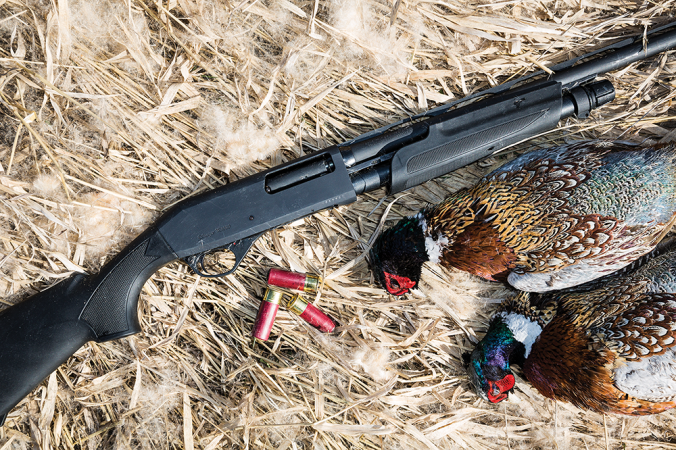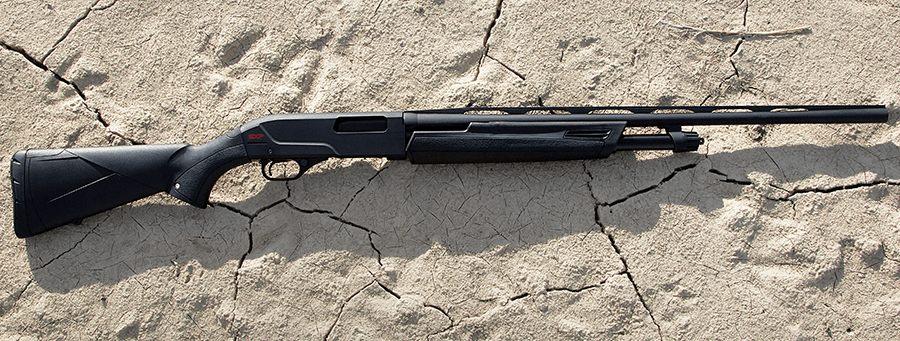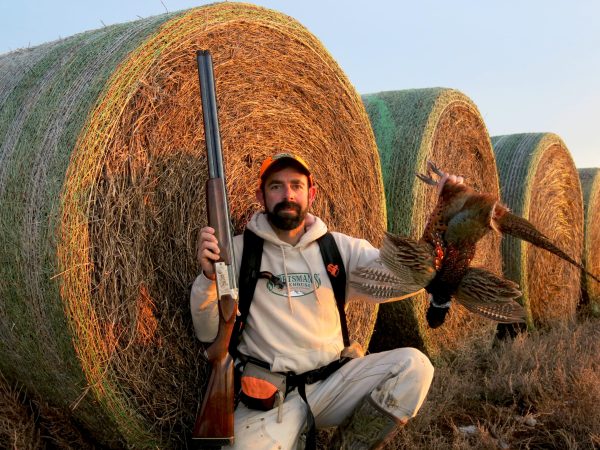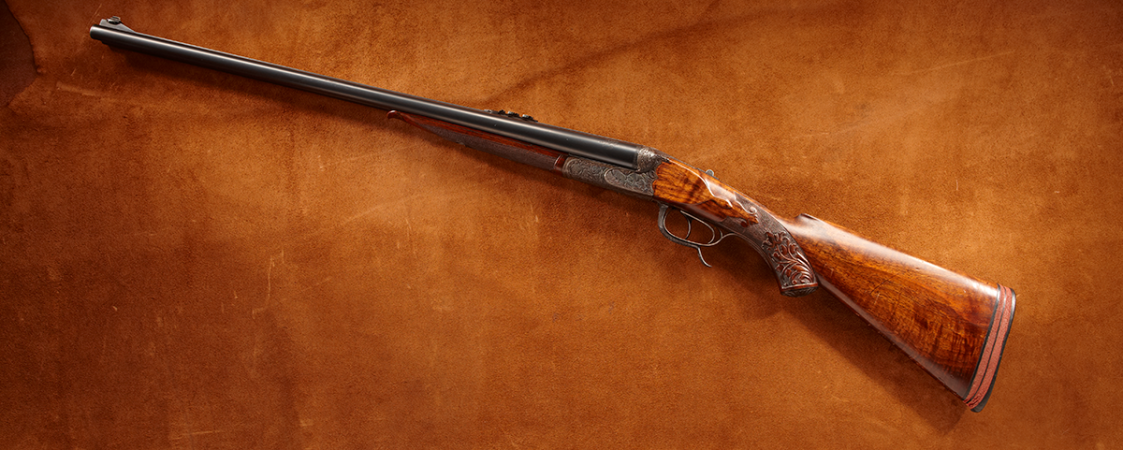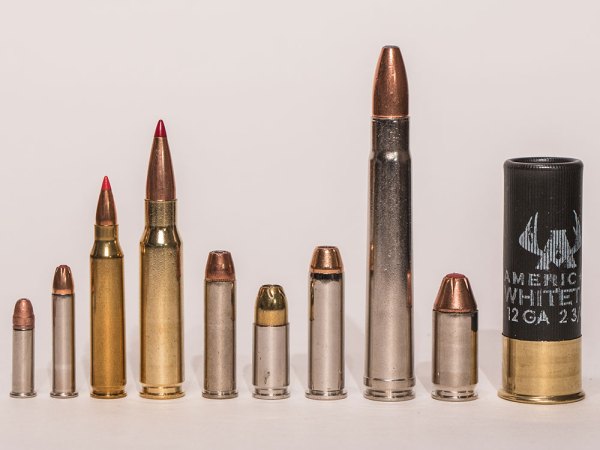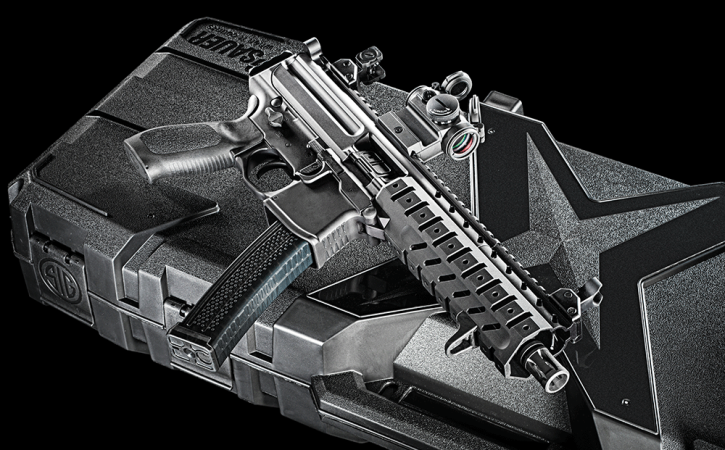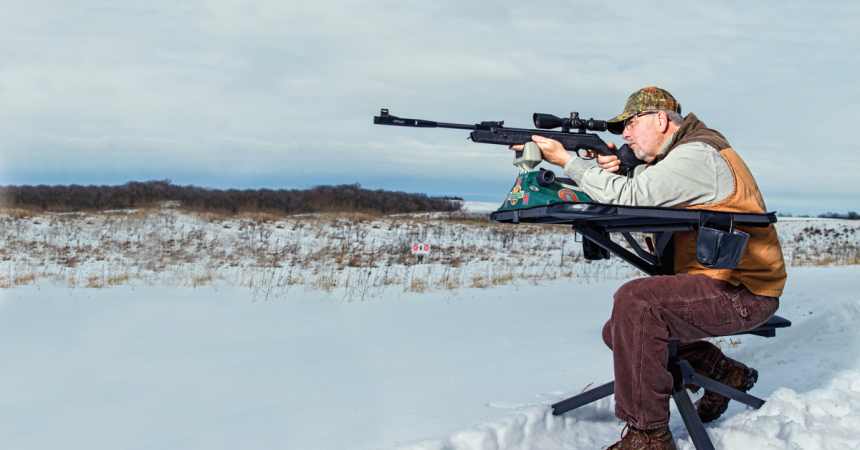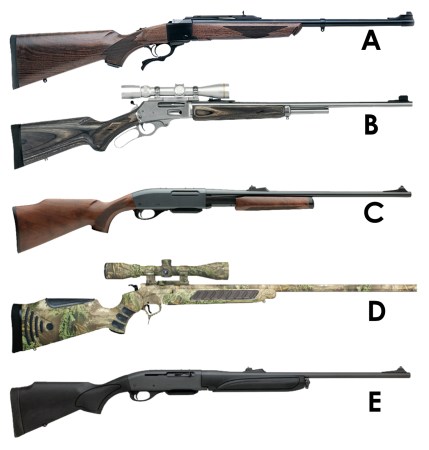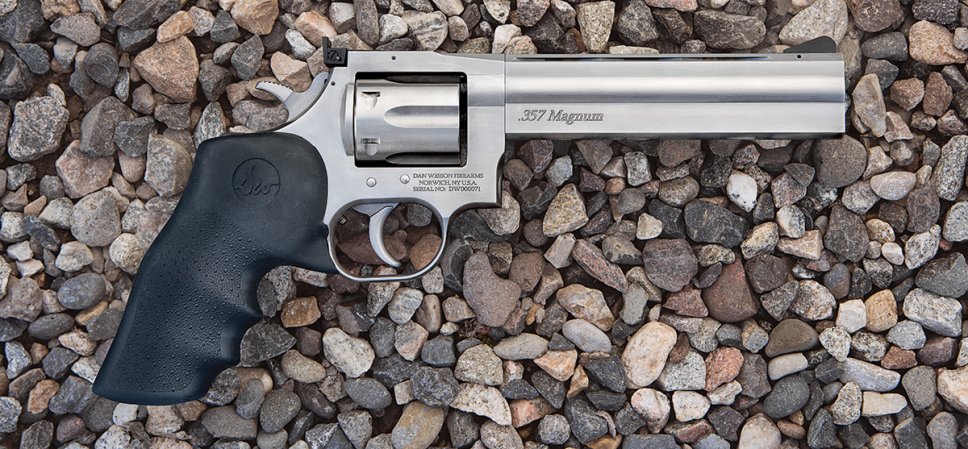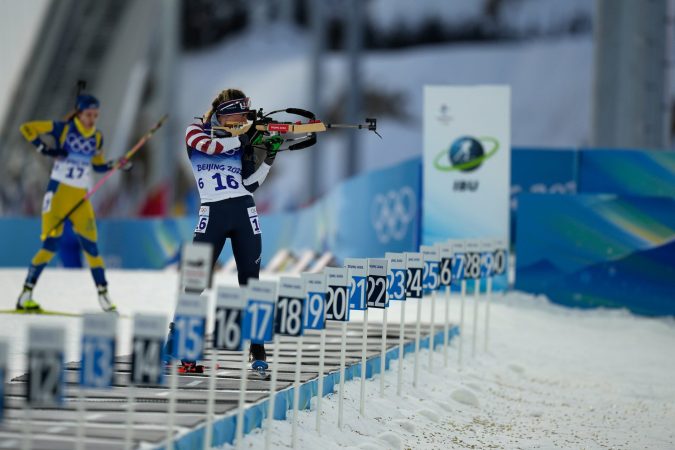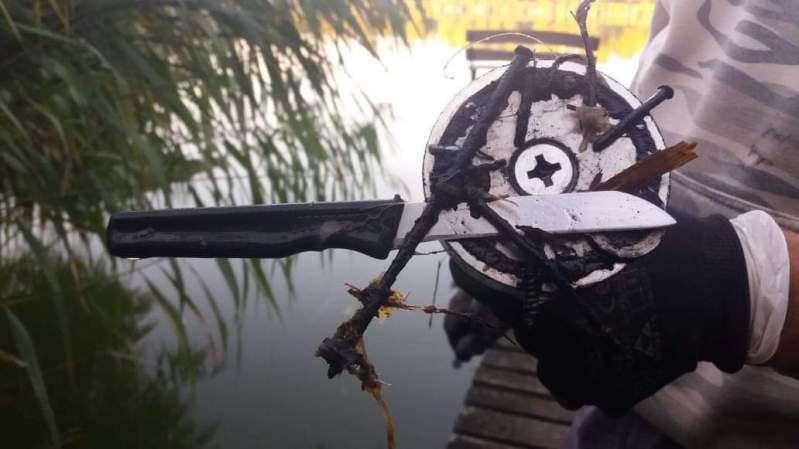We may earn revenue from the products available on this page and participate in affiliate programs. Learn More ›
Being a gun engineer who is also the son of John M. Browning comes with some serious expectations. But Val Browning (1895-1994) lived up to his father’s legacy, and then some. Val Browning completed John Browning’s work on the Browning Superposed over/under and the Hi-Power handgun (with the help of Fabrique Nationale design legend Dieudonné Saive). He also designed the Browning Double Automatic shotgun, one of the 48 patents Val Browning held (his father had 128 if you’re keeping score).
The Double Auto was a two-shot, short-recoil-operated semi-automatic, and one of the most innovative shotguns of its time. More than 65,000 were made between 1952 and 1971. It was not a roaring success compared to his father’s legendary Auto-5 (few autos are), but it did have some improvements and functionality not found in the ol’ humpback. And before gas-operated shotguns became popular in the 1950s, the Double Auto was the first choice of many waterfowl and upland hunters.
How the Double Auto Functions
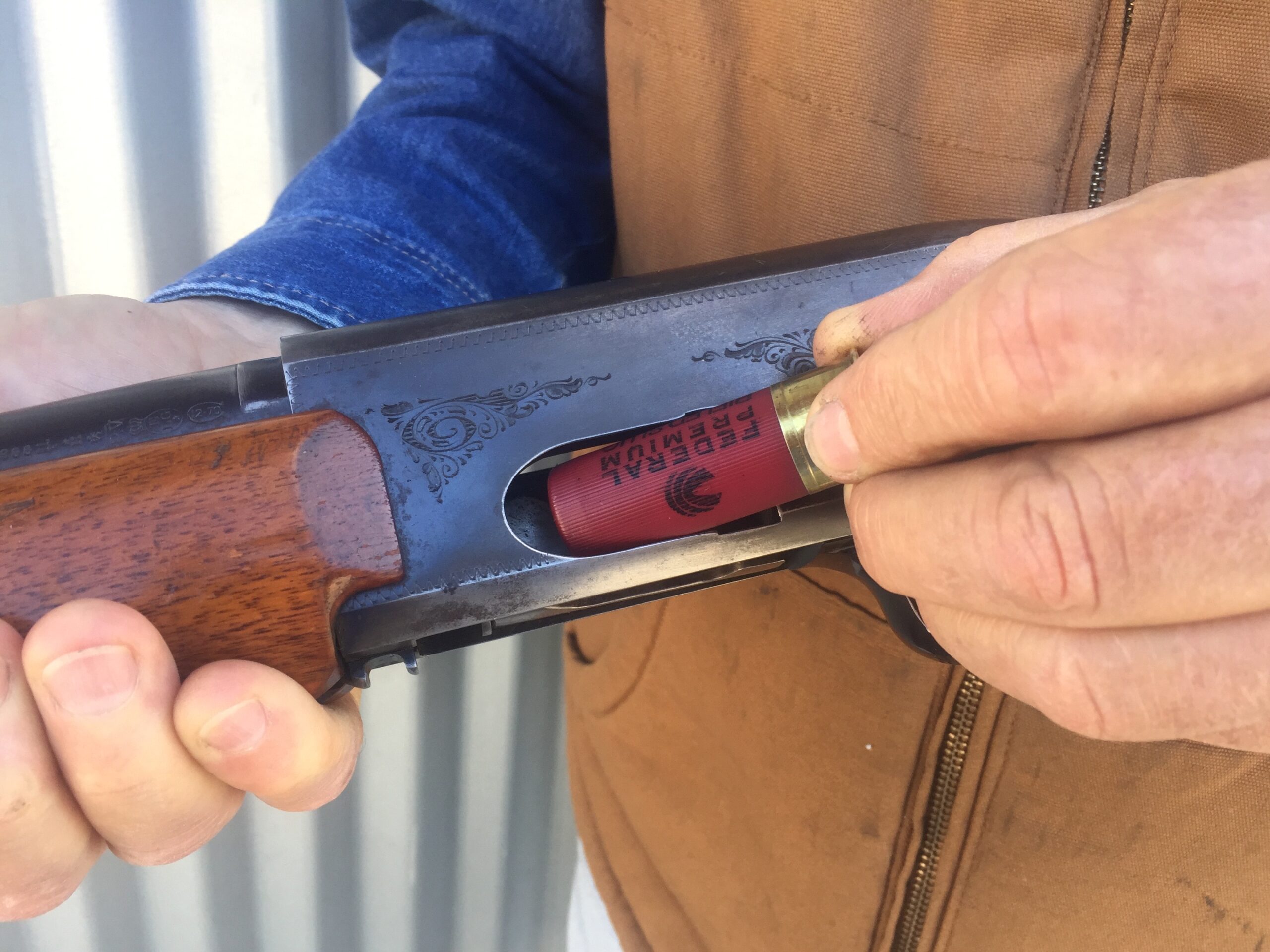
There is no tubular magazine inside the Double Auto. Once the action is open, you insert a shell into the loading port located on the left side of the breech, a feature found only on the Double-Auto and Browning B-2000. The bolt then slides forward automatically to chamber the round. This speed-loading component is common on many of Browning’s semi-autos (it was Val’s design), including the Auto-5. Take care not to let your fingers wander into the ejection port on the right side—they could be caught by the bolt as it closes.
You then push the second round into the loading port where—under mild spring tension—it awaits its turn to be chambered after the first shot is fired. So instead of one in the chamber, two in the magazine, like a conventional repeater, the Double Auto keeps one round in the chamber and the second in the loading port.
If you need to close the action without loading a cartridge, simply press the bolt release. It’s on the bottom of the receiver and fairly unobtrusive. Just push it forward, again taking care to keep any fingers out of the ejection port.
More Unique Features of the Double Auto
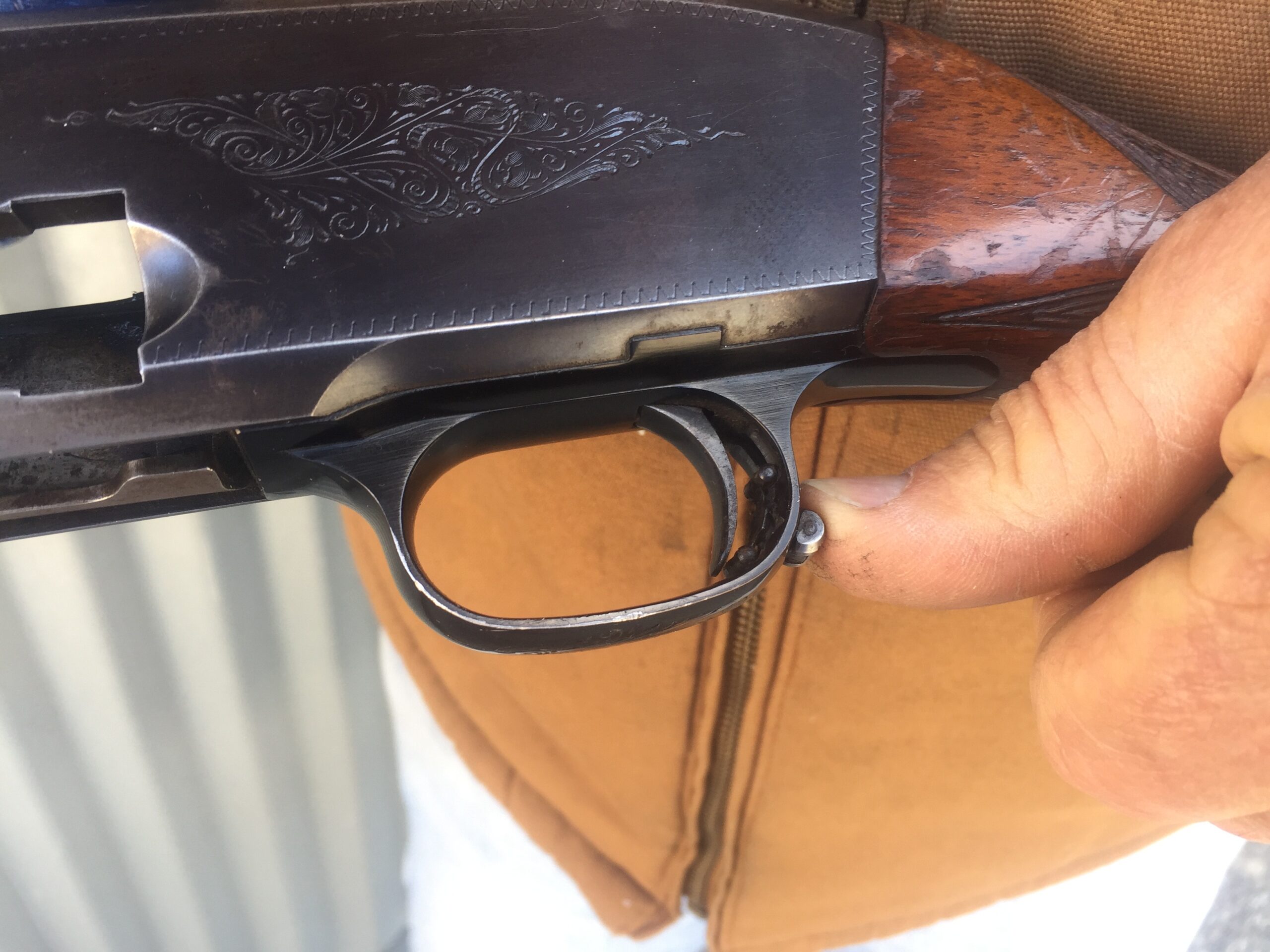
With a receiver length of just 6 5/8 inches, the Double Auto has the shortest action of any semi-auto ever made, regardless of gauge. That kept most of the weight between the shooter’s hands, making the gun more balanced, and easier to swing.
There is an ambidextrous safety located to the rear of the trigger guard. Early A5s had a similar safety that was located inside the trigger guard, but that made the gun more hazardous to shoot. Val Browning improved upon his father’s design and moved the safety outside the trigger guard. The Double-Auto was also the first repeater without a fore-end cap. The first version of the Browning Maxus was the only other semi-auto to use this design.
The Double Auto’s Variants
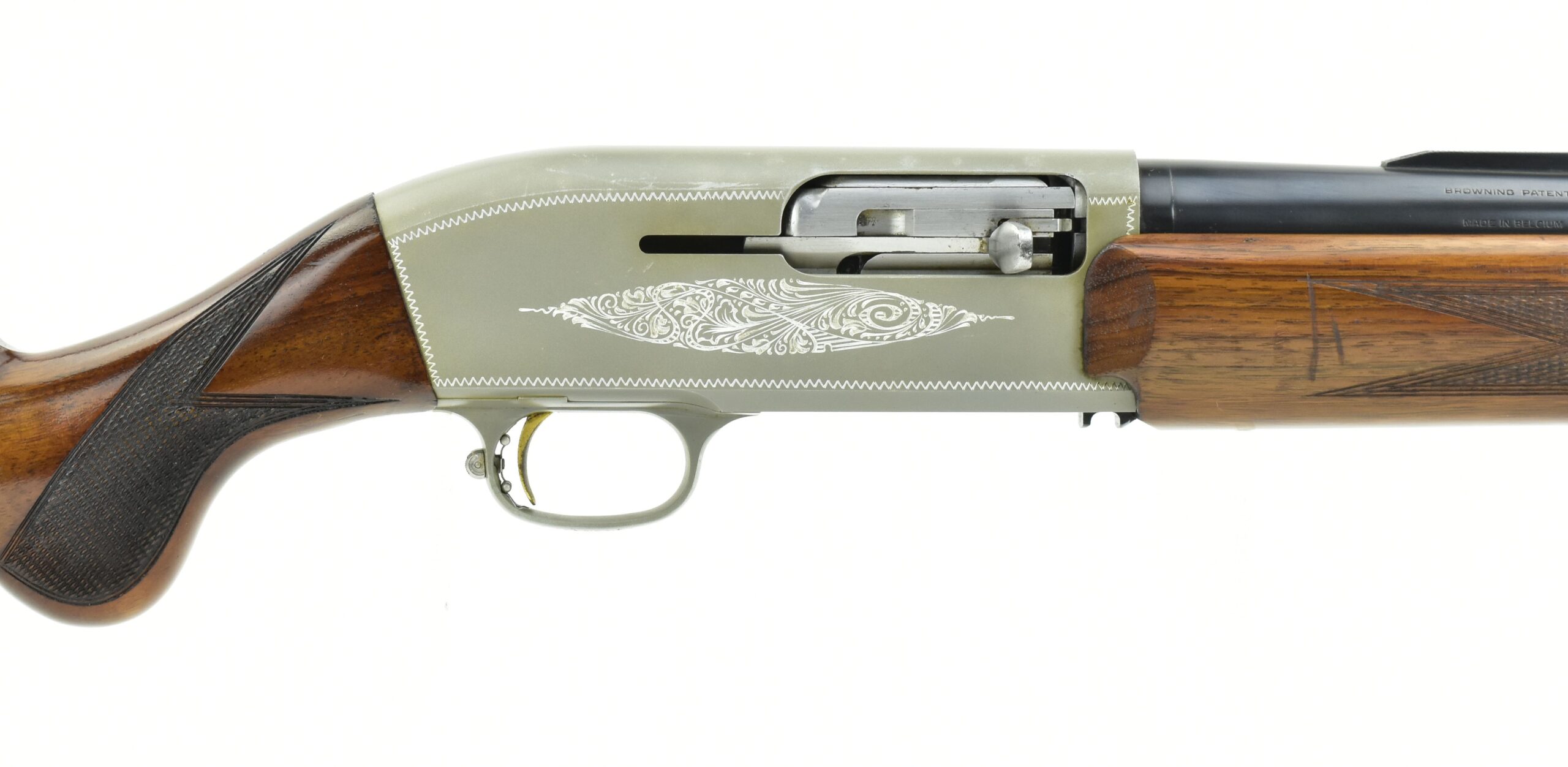
According to S.P Fjestad’s Blue Book of Gun Values, Browning offered the Standard Double Auto (1952-1960) and the Lightweight Double Auto (1952-1956), which featured an alloy frame that was available in a myriad of anodized color variations—Velvet Grey, Dragon Black, Autumn Brown, and Forest Green. In addition, there were two other alloy framed variants, the Twelvette and Twentyweight (1957-1971).
Initial barrel lengths for the steel-receiver Standard Double Auto and Lightweight included 25.5, 27.5 and 29.5 inches with your choice of fixed choke. All 12-gauge Double Autos featured a 2 3/4-inch chamber. The 20-gauge Twentyweight, could handle 3-inch ammo, although it was not recommended by Browning.
My gun is a 29.5-inch barreled Standard with just enough dings, freckles, and assorted discolorations to keep it affordable (most Double Autos can be had for under $1,000). It was acquired for a surprisingly modest bid by a shooting buddy, Doug Fee. The barrel was marked with a single asterisk, which Browning used to indicate a full choke. The more asterisks, the more open the choke. Our choke measured .691 inches, a touch tighter than the nominal .694 for 12-gauge full chokes.
How the Double Auto Patterned
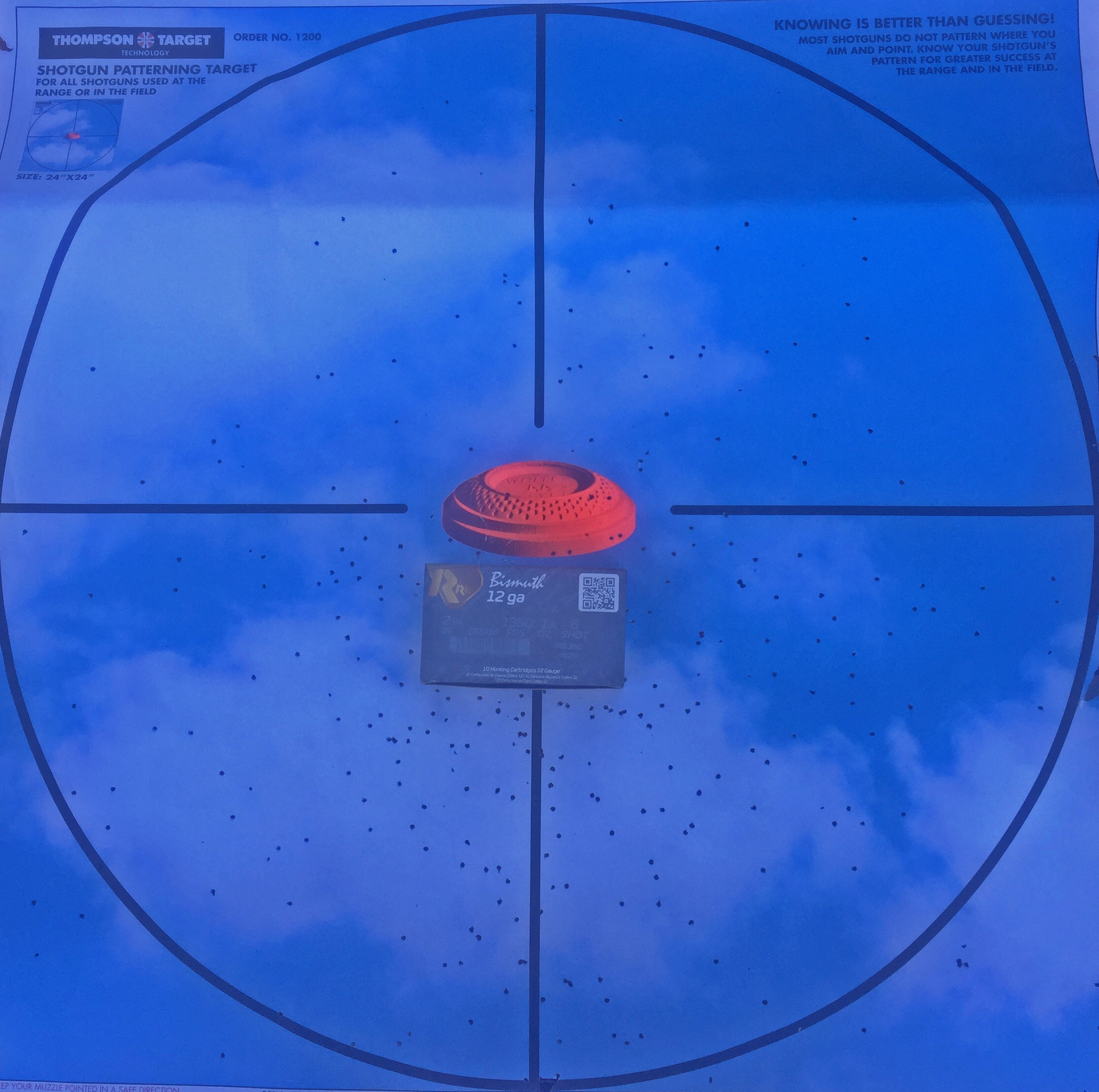
I patterned the Double Auto at 30 yards with Rio Bismuth No. 6 shot—a hunting shell well suited for either ducks or pheasant—with a listed payload (1¼ ounces) of 296 pellets and muzzle velocity of 1,350 fps. It’s not safe to shoot steel or TSS through a Double Auto because of its thin steel barrel.
Using a 24- by 24-inch Thompson Shotgun Patterning Target, the Double-Auto put 288 pellets inside the circle, which amounts to a 97 percent pattern. However, nearly 76 percent of the strikes were below the horizontal dividing line. The Double Auto-Rio Bismuth pairing would make a solid option if you cover the bird and shoot.
Short-recoil guns like the Double Auto have a reputation for generating heavier recoil than a comparable gas-operated gun. But our gun was quite tolerable with Rio Bismuth and downright pleasant shooting Federal 1 1/8-ounce target loads. The Double Auto weighs nearly 8 pounds, which helps mitigate recoil, plus the original recoil pad was still quite soft. Of course, the alloy variant of the Double Auto is at least a full pound (or more) lighter and would have delivered more recoil.
Read Next: 9 of the Most Underrated Semi-Auto Shotguns of All Time
Hunting with the Double Auto
The fact that the Double Auto has no third shot and doesn’t chamber 3-inch shells is not a deal breaker—it’s part of the gun’s charm. I know a few folks that still duck hunt with this gun, and it does the job just fine with 2¾-inch bismuth or Kent Tungsten-Matrix. And many upland hunters use two-shot break-action shotguns, so there is no disadvantage shooting the Double Auto on roosters. Plus, it points and swings as a well-made Belgian Browning should.
Val Browning definitely upheld the family name with the Double Auto, and it actually cost more than the vaunted A5 during its production run. But once inertia-driven and gas-operated shotguns entered the fold, the once innovative short recoil system of the Double-Auto was rendered obsolete. Still, it was a gun chock full of advancements, which is particularly impressive since John Browning had already brought so much to the repeating and break-action shotgun platforms.

